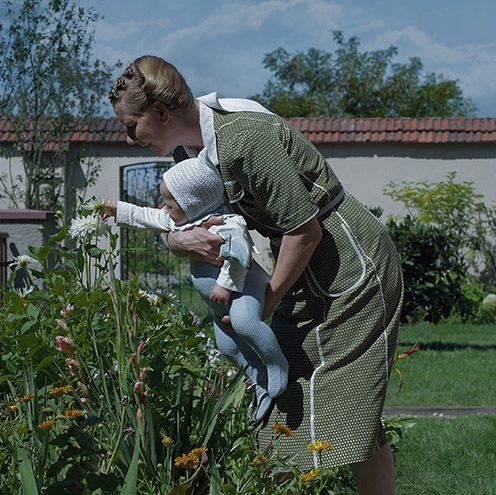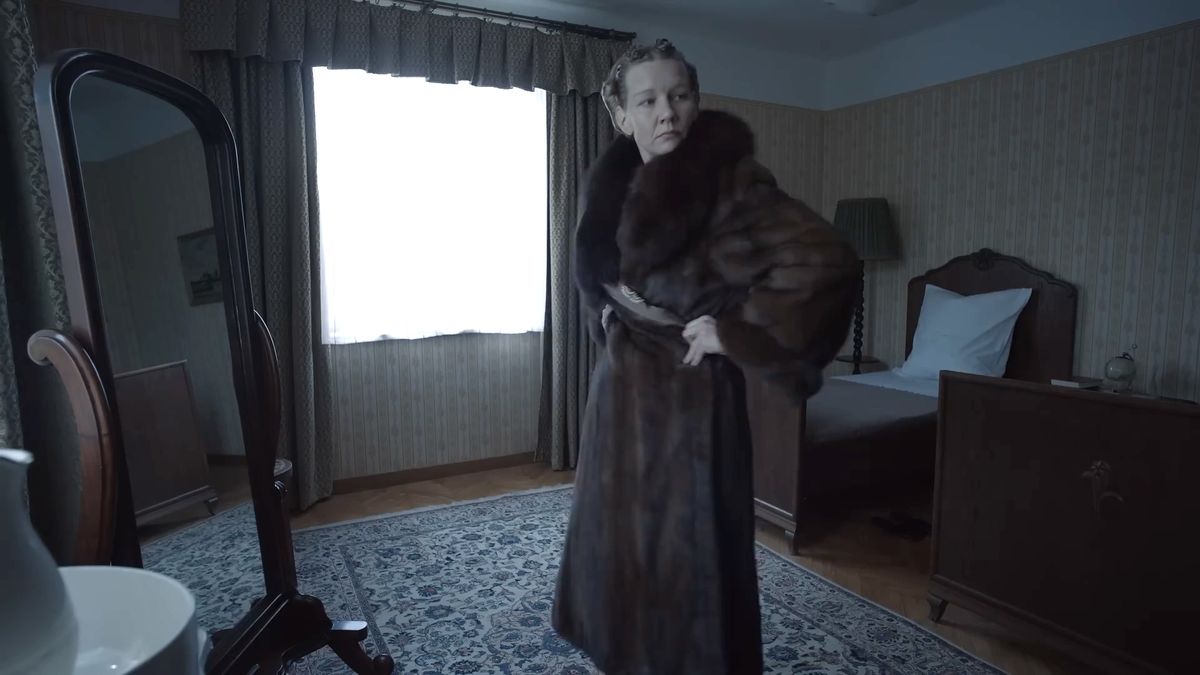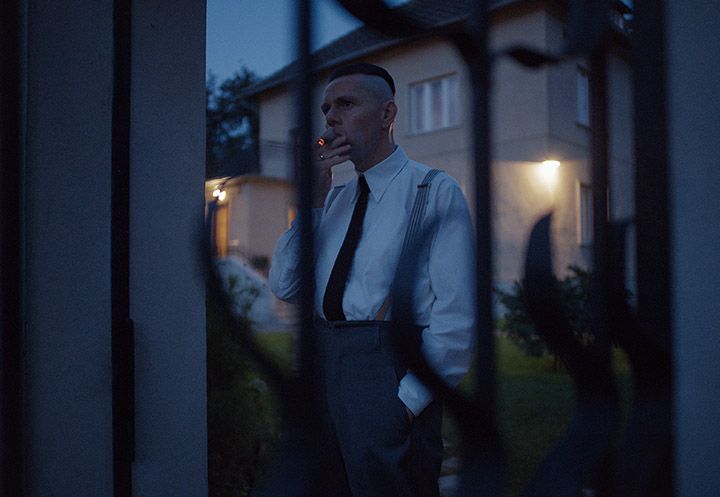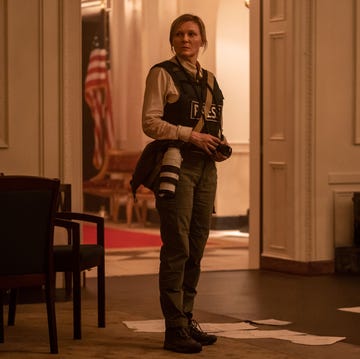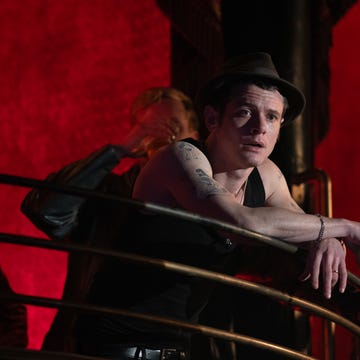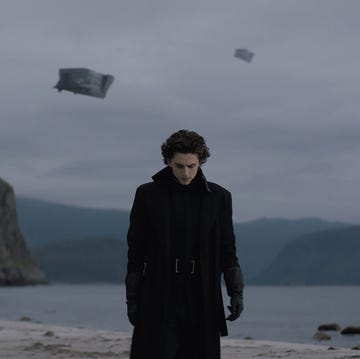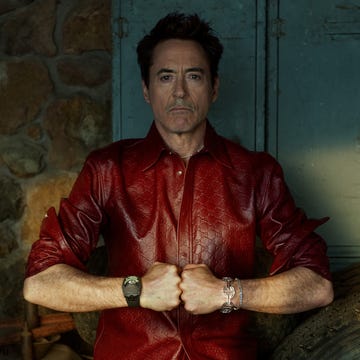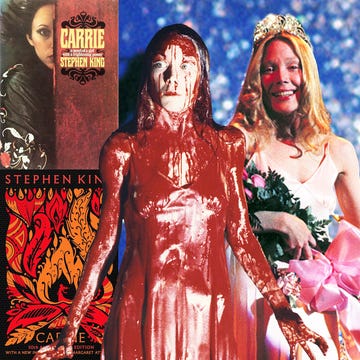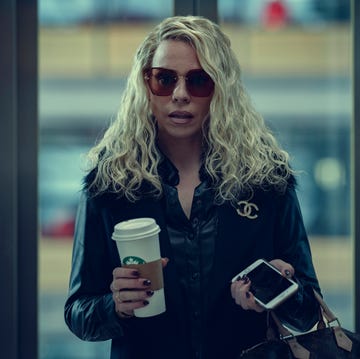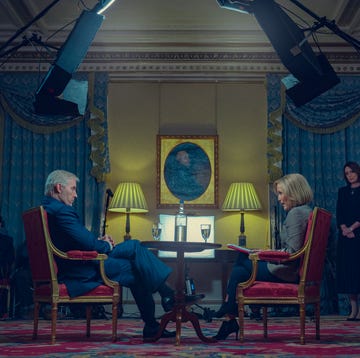At least as far as his feature films go, the British director Jonathan Glazer could not be described as prolific. He made Sexy Beast in 2000, and the slightly less beloved but still worthwhile dramas Birth, in 2004, and Under the Skin, in 2013, but The Zone of Interest, which comes out in the UK in February, will be his first full-length movie for a decade. That’s not to say he hasn’t kept himself busy: Glazer is probably still best known – at least by those over 40 – for his iconic music videos, from Blur-as-Droogs for “The Universal” and Jamiroquai’s JK in that spinning set for “Virtual Insanity” to Thom Yorke slowly running someone over in Radiohead’s “Karma Police”, not to mention a certain Guinness ad. But when he does choose to make a film, he will always make it count.
The Zone of Interest, which he both directed and wrote, is, at face value, a simple, domestic story. A hard-working family man is given a new position at work, which will take him away from the home he has set up with his wife and their five children, and from which she, despite the potential damage to their relationship, does not wish to move. But fill in a few blanks and the timbre changes dramatically. The man is Rudolf Höss, commandant of Auschwitz, and the house to which his wife, Hedwig, has become so attached shares a concrete garden wall with the camp in occupied Poland in which 1.3 million mostly Jewish men, women and children were imprisoned, of whom 1.1 million would be methodically killed.
The title of Glazer’s film – which won the grand prix at Cannes this year – comes from the term used by the Nazis to describe the 15-square-mile SS-patrolled area around Auschwitz; it is also the title of a 2014 Martin Amis novel which was partly set in the fictionalised Höss house, though the plots bear little resemblance. The Zone of Influence is a film that almost entirely (and the “almost” is important) works on a kind of tonal juxtaposition: a depiction of the everyday goings-on of family life within the Hösses’ walled compound and grounds – “It’s a paradise garden,” Hedwig’s mother coos – contrasted with the largely unseen atrocities happening on the other side of the wall.
Here are the ladies of the household in the kitchen, under the instruction of Hedwig (Sandra Hüller), sorting through a bag of women’s clothes that have been brought to them from the camp, where they will no longer be needed. Here is Rudolf (Christian Friedel) smoking by the outdoor pool at night, the burning ember of his cigarette echoing the flames erupting from the enormous chimney tower behind him. Here are the excited screams of the Höss children at play, melding with the echoing shouts – and are those gun shots? – from the other, imagined yard.
Visually, courtesy of cinematographer Łukasz Żal, all is composed and controlled. The camera tends to be still, and at a distance from the main characters; we are not forced to identify too closely with these banal monsters. In fact, because our view is often from a corner, or down a corridor, we are more often than not observing them from the edges of the room, like their silent Jewish servants; given the angle is often low, there’s even a sense of crouching, or cowering.
But if Glazer allows us a visual remove, from the noise there is no escape. The distorted, dissonant soundtrack comes from Mica Levi, while British sound designer Johnnie Burn rightly won a technical award at Cannes for his work, in which every mundane, even bucolic, scene is undercut by a low rumble of trucks, or unspecified clanking machinery, or anguished yelling. Even when the Höss family leave their home to swim in a nearby lake, their walk back through the woods is pierced by the haunting percussive taps of a woodpecker on a hollow tree, flushing insects from hiding.
The Hösses – portrayed with restraint by Hüller and Friedel, who nevertheless imbue Rudolf and Hedwig with a physicality that is subtly repulsive – don’t seem to notice. But what is more horrific is that, after a certain amount of time has elapsed, nor do we. Yes there’s that distant droning, and the unintelligible shouts, but increasingly, as the film wears on, we become acclimatised, and have to remind ourselves – with a lurch of the stomach – to hear it. Because the idea of “the zone of interest” is also key to understanding exactly what Glazer is asking of his audience. Where are the limits of our own “zones of interest”? At what point does desensitisation occur and how can it be resisted?
Here’s where that “almost” from earlier becomes relevant. Because of course we must resist it. Glazer does so with sudden, jarring, formal interventions: a sudden extreme close-up of the inside of a dahlia, fading to red; a sequence in negative black-and-white of a girl hiding apples in a pile of dirt for the prisoners who will soon be digging into it; real footage of cleaners in Auschwitz as it is today, a tourist attraction; a sudden deep, guttural noise, like the belch of a disgusted god.
Sometimes, the intervention is through deprivation. In one scene, Rudolf telephones Sandra from a lavish party to tell her excitedly how he can’t concentrate for imagining the logistics of how he might gas everybody in the room. Later, when the film cuts to a complete black, and there’s nothing on the screen to distract you, you realise – particularly if you’re in a cinema – that you’re in a room full of people, in the dark. It’s a deeply, deeply unsettling experience, and your senses are, in that moment, fully alert. The Zone of Interest is a brilliantly conceived, disturbingly disjointed film and it will stay with you long after it’s done.
'The Zone of Interest' is out in the US on 15 December and in the UK on 2 February

Miranda Collinge is the Deputy Editor of Esquire, overseeing editorial commissioning for the brand. With a background in arts and entertainment journalism, she also writes widely herself, on topics ranging from Instagram fish to psychedelic supper clubs, and has written numerous cover profiles for the magazine including Cillian Murphy, Rami Malek and Tom Hardy.
